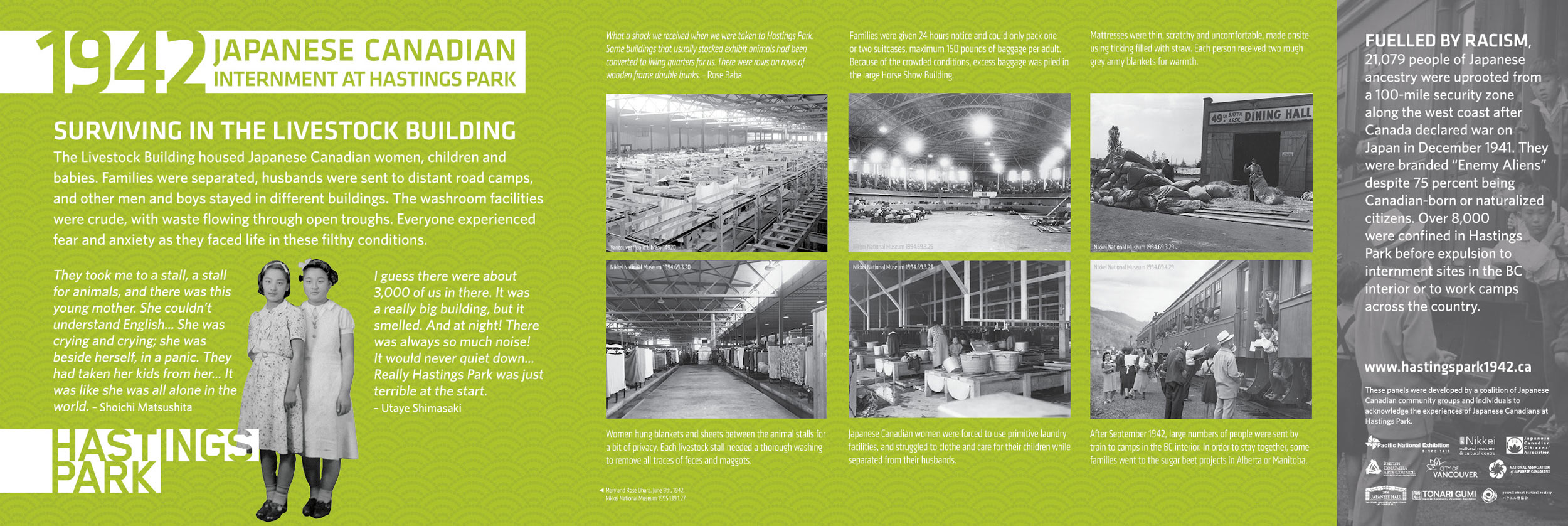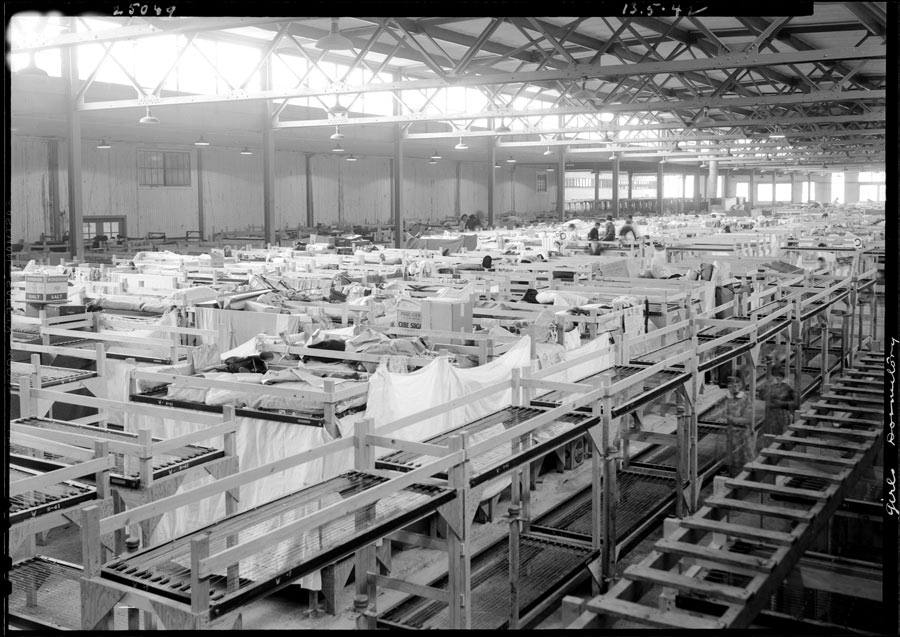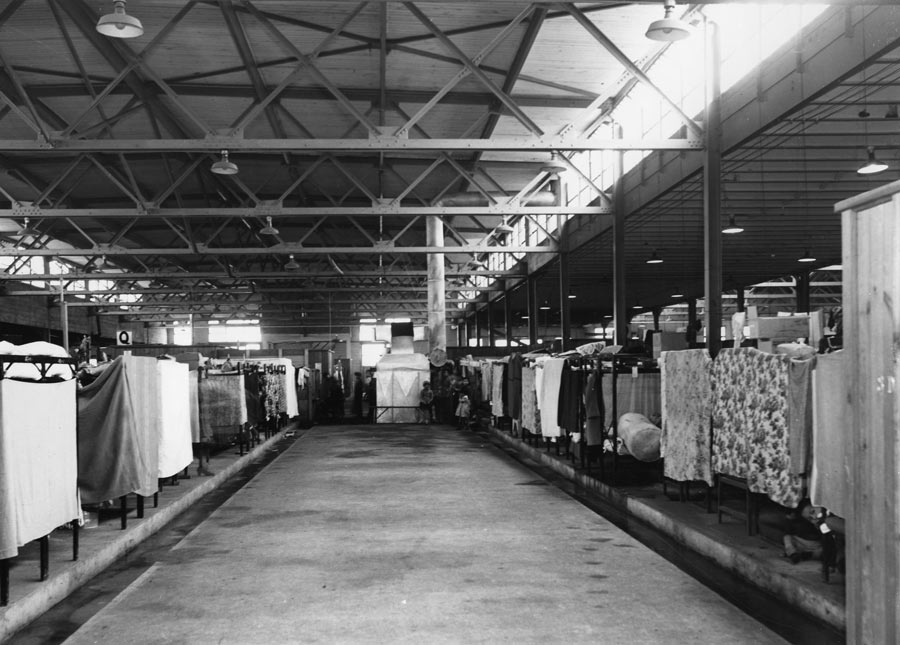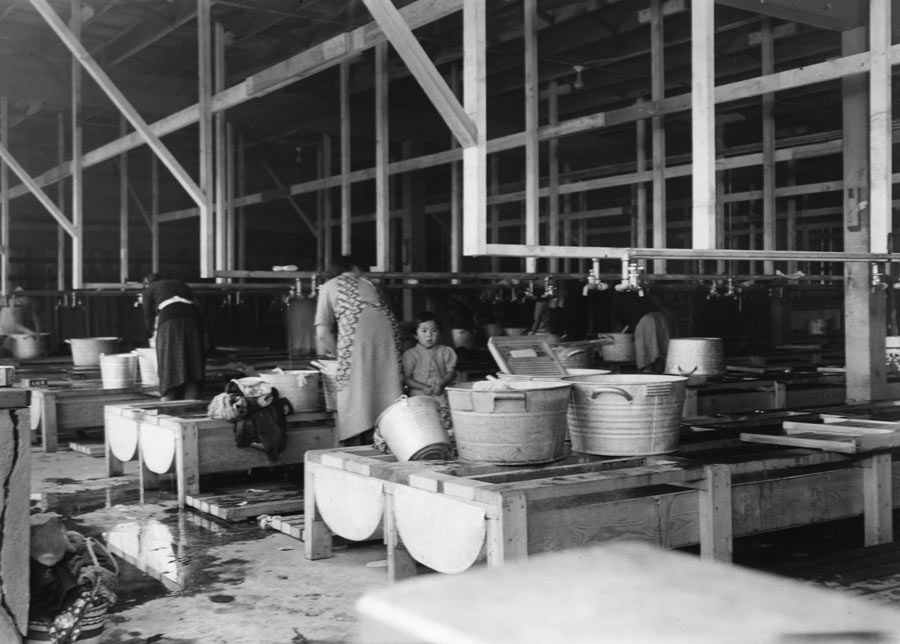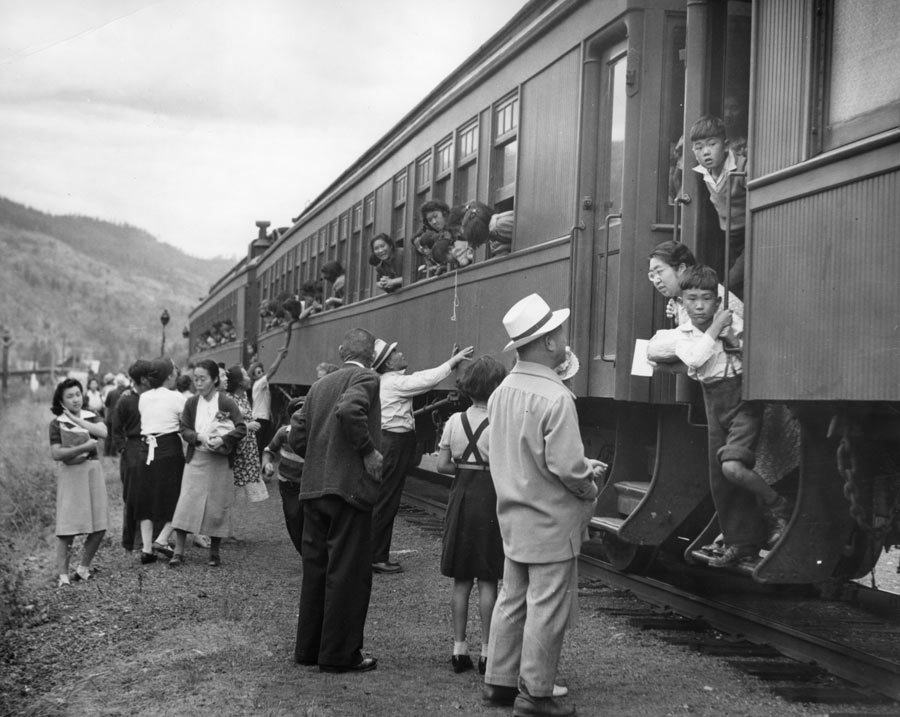Surviving in the Livestock Building
The Livestock Building housed Japanese Canadian women, children and babies. Families were separated, husbands were sent to distant road camps, and other men and boys stayed in different buildings. The washroom facilities were crude, with waste flowing through open troughs. Everyone experienced fear and anxiety as they faced life in these filthy conditions.
They took me to a stall, a stall for animals, and there was this young mother. She couldn’t understand English... She was crying and crying; she was beside herself, in a panic. They had taken her kids from her... It was like she was all alone in the world. – Shoichi Matsushita
I guess there were about 3,000 of us in there. It was a really big building, but it smelled. And at night! There was always so much noise! It would never quiet down... Really Hastings Park was just terrible at the start. – Utaye Shimasaki
What a shock we received when we were taken to Hastings Park. Some buildings that usually stocked exhibit animals had been converted to living quarters for us. There were rows on rows of wooden frame double bunks. - Rose Baba
Women hung blankets and sheets between the animal stalls for a bit of privacy. Each livestock stall needed a thorough washing to remove all traces of feces and maggots.
Mattresses were thin, scratchy and uncomfortable, made onsite using ticking filled with straw. Each person received two rough grey army blankets for warmth.
Japanese Canadian women were forced to use primitive laundry facilities, and struggled to clothe and care for their children while separated from their husbands.

